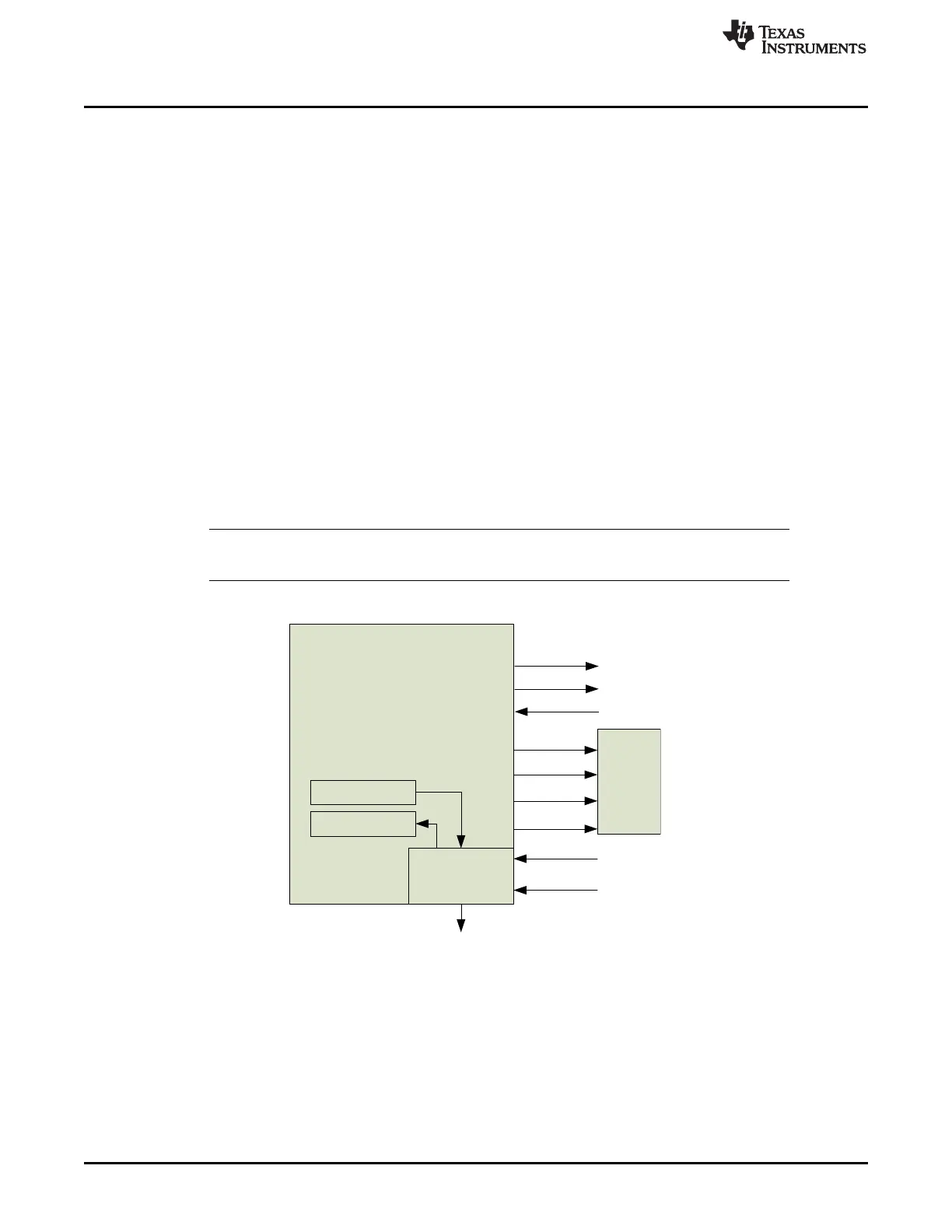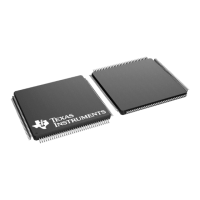PortA
Addr.
Addr. Parity
Controls
Control Parity
Response
Response Parity
Parity Checkers
DMA
DMA_TER_ERR
(to ESM)
PortB
Addr.
Controls
Response
TERECTRL
TEROFFSET
TER_EN
NOTE: Only PortA supports transaction parity
Ext.
Parity
Checkers
Module Operation
www.ti.com
720
SPNU563A–March 2018
Submit Documentation Feedback
Copyright © 2018, Texas Instruments Incorporated
Direct Memory Access Controller (DMA) Module
20.2.19 Transaction Errors
DMA generates parity for all transactions and checks parity for responses to the transactions. Note that
this feature is distinct from the ECC checking for the Control Packet RAM.
If a parity error is detected in these transactions and TER_EN bit in TERECTRL register is enabled, DMA
will stop processing the current channel at the arbitration boundary and will update TER_ERR flag. The
offset of the channel during which the parity failure was detected will get captured in the TERROFFSET
register. Also, the error is indicated to the ESM module. This is shown in Figure 20-18.
Since the channel stops due to an error and likely the peripheral and the DMA are out of synchronization,
it is recommended to follow the sequence below to resume the channel:
1. Read the TEROFFSET register to find the channel number causing the transaction error. The register
automatically clears to 0 once read.
2. Clear the TER_ERR flag by writing 1 to the flag.
3. Disable the peripheral that triggered the DMA event.
4. Reinitialize the control packet. Note that this does not change the channel's HWCHEN bit.
5. Re-enable the peripheral to trigger the DMA event.
6. Re-enable the DMA channel (which was previously cleared by the DMA logic due to the error).
In certain cases, it is possible that DMA sets the TER_ERR flag without updating the TEROFFSET
register. This occurs due to parity errors when no channels are active. The recovery sequence in this case
is to clear the TER_ERR flag.
NOTE: Handling of a parity error at a system level may require additional operations that are not
detailed here.
Figure 20-18. DMA Transaction Parity

